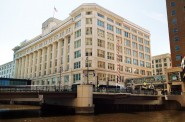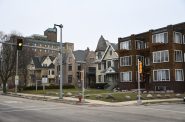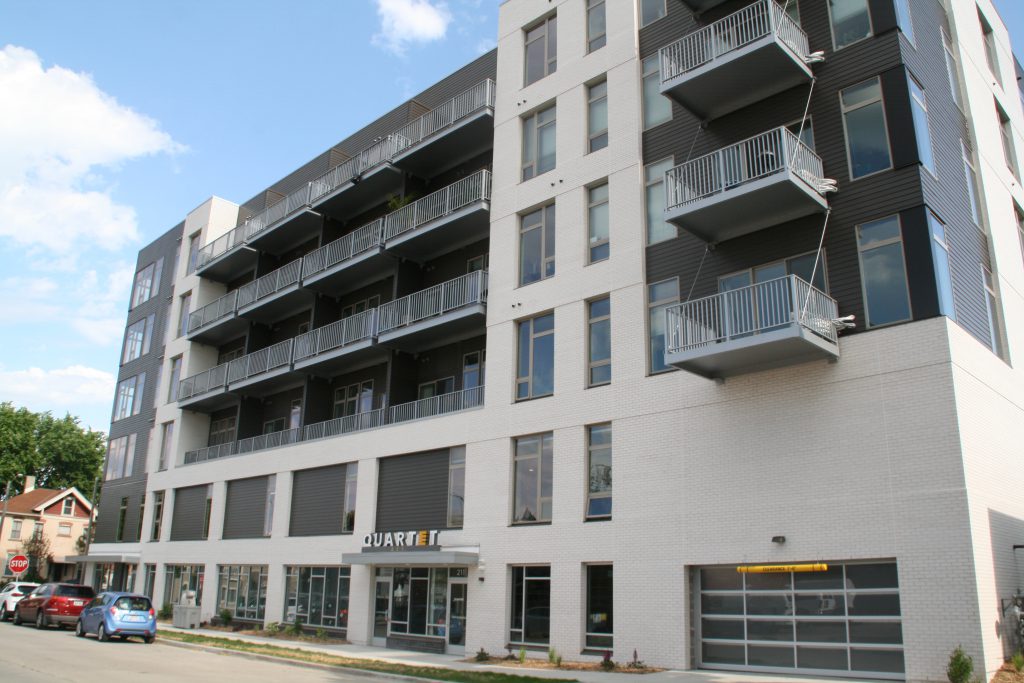Milwaukee Seeing Population Growth Amidst Pandemic
Study shows city fourth in nation for migration rate increase.
The COVID-19 pandemic has resulted in a surge in people moving to the Milwaukee area, at least temporarily.
That’s according to a study by LinkedIn’s Economic Graph team. The study shows a 4.5 percent year-over-year increase in users marking their residence as Milwaukee.
The rate places Milwaukee fourth in the nation, behind only Jacksonville (10.7 percent), Salt Lake City (9.6) and Sacramento (7.6). Kansas City (3.9 percent) comes in fifth.
The biggest losers? New York City (23.4 percent) and the San Francisco Bay Area (21.1 percent). Seattle (10.6 percent), Boston (9.9) and Portland, OR (9.7) round out the five biggest drops.
The study compares April through August 2020 to the same period in 2019. It represents LinkedIn-defined cities that cover metropolitan areas and not municipal boundaries.
An April report from ApartmentList found that the largest source of individuals looking to rent in Milwaukee was Chicago.
In late August, ApartmentList reported that Milwaukee was among a few cities where rental prices had increased during the pandemic.
Where are rents falling? The list largely overlaps that of LinkedIn’s migration losers. San Francisco, New York, San Jose, Miami, Boston, Austin and Seattle saw the greatest drops since March.
None of the reports speculate that the change is permanent, but each note a strong trend towards mid-sized cities like Milwaukee.
A recap of the week’s real estate news…
WEDC Invests $144,400 in Bronzeville Business Incubator
The Wisconsin Economic Development Corporation (WEDC) has joined the African American Chamber of Commerce of Wisconsin (AACCW) in an effort to develop a business incubator for Black entrepreneurs in the Bronzeville Neighborhood with a $144,400 Community Development Investment Grant.
The Chris Abele Legacy Co-Working and Innovation Space, as it’s called — thanks to a $300,000 donation from the former county executive — is being built out in a two-story, 4,000 square-foot vacant building at 1920 N. Martin Luther King Jr. Dr. The incubator will have 1,200 square feet of co-working space and private offices for lease, and an 800 square-foot shared commercial kitchen for local entrepreneurs. And it will house the AACCW’s new offices.
MATC Creating Campus Gateway, Demolishing Building
Milwaukee Area Technical College plans to demolish a one-story building to create a more attractive gateway to its downtown campus.
The $300,000 project, expected to be completed by spring 2021, will have the technical college convert a portion of the site at 739 W. Juneau Ave. into a pocket park and rain garden.
“It’s an opportunity to take an eyesore on that corner and make a better image for MATC,” said Ginny Routhe, director of facilities planning, sustainability and construction, in an interview.
Marquette Seeks Downtown Mixed-Use Project
Marquette University is seeking to have approximately seven acres of land it owns at the southwest corner of Downtown rezoned to support more redevelopment options. The properties, mostly vacant land, are roughly bordered by W. Michigan St., Interstate 794, N. James Lovell St. and Interstate 43.
The university began assembling the properties in 2014 for a $120 million Athletic and Human Performance Research Center in partnership with Aurora Health Care. But Aurora pulled out of the project and Marquette ended up building a scaled-down version of the project at 733 N. 12th St., closer to the middle of its campus.
The land is currently zoned for institutional use (TL) and the university is seeking to have it rezoned under the city’s C9G designation for “mixed activity”, which allows retail, service, light manufacturing, warehousing and residential uses. “Because of their operational characteristics, many of the uses allowed in the mixed activity district should be relegated to the peripheral portions of the downtown district,” says the city’s zoning website.
Foundation Work Underway for World’s Tallest Timber Tower
It’s just a hole in the ground now, but in the coming months a new structure will emerge from the long-time parking lot at 700 E. Kilbourn Ave.
The 25-story apartment tower, to be known as Ascent, will be the world’s tallest mass timber building.
Mass timber is an engineered product made by combining layers of lumber into a stronger material. The material is capable of building much taller buildings than conventional wood construction methods because it only chars (rather than burning through) in a fire and offers enhanced strength. Earlier this year a model unit passed a three-hour fire test. The building material is spreading quickly from Austria, where it was invented, and the Pacific Northwest, where it has been most commonly implemented in the United States.
Op Ed: Affordable Housing Is Needed in Suburbs
President Donald Trump is attempting to undermine the very fabric of our communities, including the diversity of our nation’s suburbs, by using unfounded, hurtful scare tactics.
In comments he made in late July, first on Twitter and then at a Texas rally, he said, “It’s been hell for suburbia,” and that “people living their Suburban Lifestyle Dream [would] no longer be bothered or financially hurt by having low-income housing built in your neighborhood.” He was referring to his administration’s move to eliminate a program initiated by President Obama aimed at fighting racial injustice and segregation in suburban housing.
Demonizing Americans earning low incomes is unacceptable. It divides a nation in need of cohesion and goes directly against the ethos and values on which this country was founded. The president’s comments fail to recognize the many hard-working families, retired seniors, and growing immigrant communities that allow suburbs to thrive socially and economically. Teachers, first-responders, service and hospitality workers all desire to live in the communities where they work. These people have the same right to affordable housing in neighborhoods of opportunity as everyone else in our community.
Johnson Financial Group Moving To Top of Downtown Office Tower
Johnson Financial Group, parent company of Johnson Bank, will consolidate its two downtown Milwaukee offices at the top of the Cathedral Place office tower at 555 E. Wells St.
The financial firm also plans to open a bank branch on the first floor of the mixed-use building. Johnson will lease 45,000 square feet in total under a 10-year lease.
“We’re excited to be making a significant, long term investment in what will become our flagship location in the heart of downtown Milwaukee,” said CEO Jim Popp in a statement. “This move allows us to consolidate a few locations, while also creating a modern, progressive and collaborative space for our associates and clients.”
Council Okays Expanded King Dr. Business District
An ambitious plan to expand the Historic King Drive Business Improvement District #8, which was opposed by members of the Five Points Neighborhood Association, was unanimously approved in a 14-0 vote Tuesday by the Common Council.
The group had launched a petition drive against the business improvement district, or BID, seeking to halt the expansion.
“People I’ve talked to in other BID areas have experienced foreclosures as a residual effect of their taxes going up,” said Sy Smith, a board member for the group and a longtime Five Points resident.
If you think stories like this are important, become a member of Urban Milwaukee and help support real, independent journalism. Plus you get some cool added benefits.
Plats and Parcels
-
New Third Ward Tower Will Be Milwaukee’s Priciest
 Mar 3rd, 2024 by Jeramey Jannene
Mar 3rd, 2024 by Jeramey Jannene
-
New Corporate Headquarters, 130 Jobs For Downtown
 Feb 25th, 2024 by Jeramey Jannene
Feb 25th, 2024 by Jeramey Jannene
-
A Four-Way Preservation Fight Over Wisconsin Avenue
 Feb 18th, 2024 by Jeramey Jannene
Feb 18th, 2024 by Jeramey Jannene























A question and a speculative comment:
The first paragraph states that “the Milwaukee area” as having gained population. Does this mean the entire metropolitan area, Milwaukee County, or Milwaukee County and the WOW (Waukesha, Ozaukee, Washington)? Are these measurements for the other cities’ metro areas as well?
In the absence of additional statistical material, one can only speculate as to the reasons for growth and loss. I’m at a loss for giving possible reasons for Milwaukee’s growth, temporary or permanent. As for a couple of the cities experiencing losses, I can speculate the Boston priced a chunk of its population out of the market, as it were. Rent control and rent stabilization were eliminated statewide in Massachusetts, and rents skyrocketed, while the acceleration of property values accelerated dramatically. I, myself, was forced to move back to Milwaukee after 38 years in Boston, when the rent on my modest 1 bedroom apartment had risen to consume almost all of my fixed income (my rent had been rising by $125-$150/month with each annual lease). Newspaper accounts have chronicled an exodus of wealthy New Yorkers to second or third residences out of town, and I can speculate upon other possible reasons for those of more modest means, such as job loss, the wish to escape a crowded city during the pandemic, as well as the exorbitant housing costs that seem to be common to large cities on the Eastern Seaboard.
Milwaukee has not seen an increase in job openings (unimaginable in most places because of job loss in the pandemic), so that cannot be a major reason for the growth. Although they have been rising, housing costs are still significantly lower here than in the coastal cities and Chicago. Anybody’s speculations as to possible reasons for Milwaukee’s population growth, temporary or permanent. would be welcome.